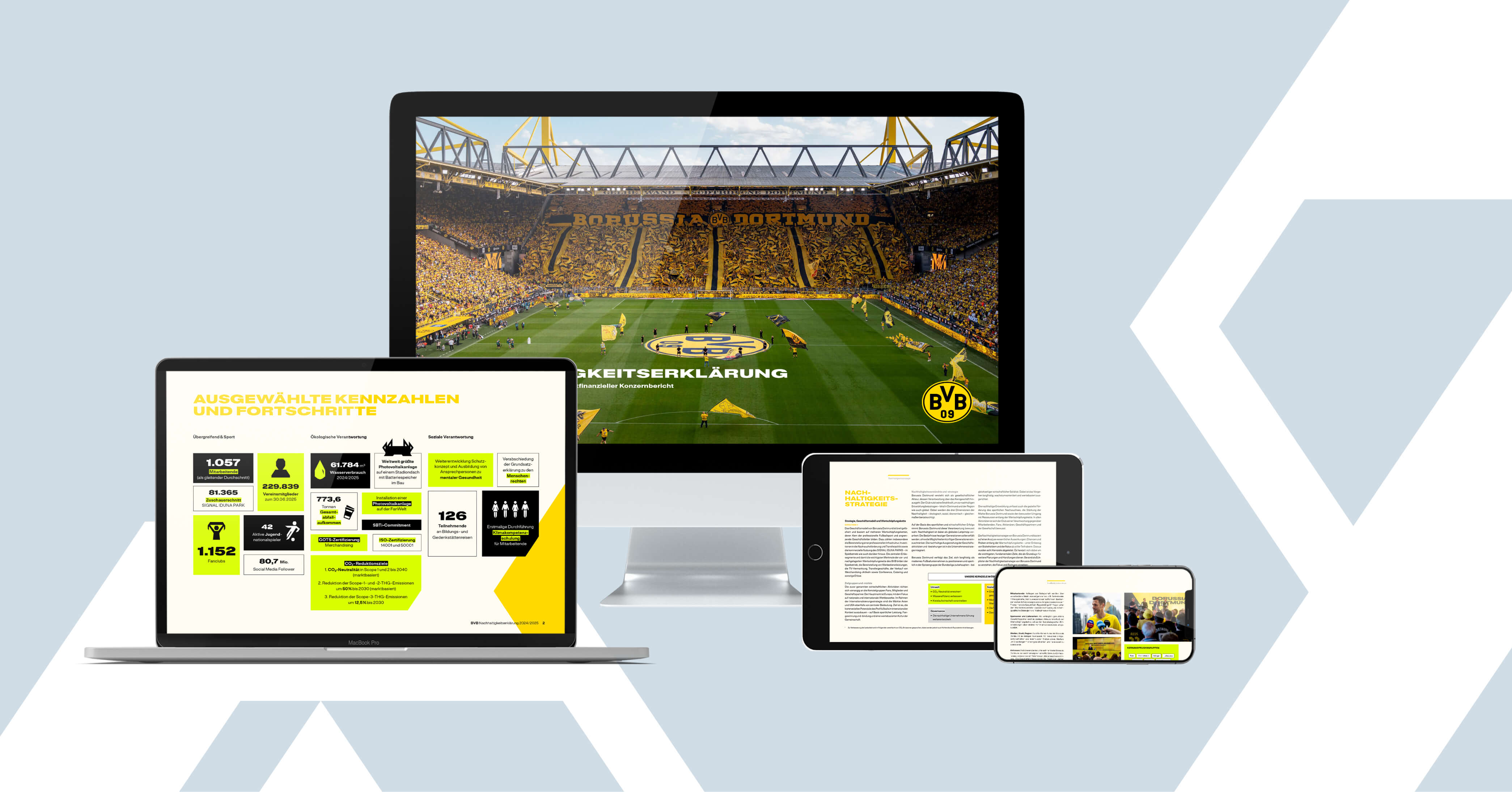Why print anything? – Why companies should focus on digital solutions for sustainability and annual reports

Many companies still publish their sustainability and annual reports in traditional print form. With their high-quality design, premium paper, and often climate-neutral production, they convey seriousness and consistency. However, reporting requirements are changing: sustainability, digitalization, and transparency are becoming increasingly important.
Digital formats offer compelling advantages here – both ecologically and strategically. They enable flexible, interactive, and targeted communication that goes beyond what printed reports can achieve.
1. Digital reporting: More than just a PDF
A digital report is much more than just a PDF file to download. Digital reporting for sustainability and annual reports opens up a whole new spectrum of design and dialogue:
- Content can be presented in an interactive and accessible manner.
- Data and key figures can be updated on an ongoing basis.
- Readers can quickly find the information that is relevant to them.
- Web analytics provide valuable insights into reading behavior and interests.
An interactive report can become part of the overall corporate strategy and engage stakeholders in the long term.

2. Efficiency, timeliness, and reach
Digital sustainability and annual reports are not only more flexible, but also more efficient in terms of distribution: they reach stakeholders worldwide immediately, without shipping logistics or fixed print runs. Changes and additions can be implemented easily without producing a new edition. This not only reduces resource consumption and costs, but also increases the timeliness and reach of reporting. Content can be distributed specifically across various channels and combined with other formats such as videos, infographics, or interviews.
Print as a valuable addition
Despite these advantages, printed reports remain relevant—not as competition, but as a targeted addition. A high-quality report can convey appreciation, consistency, and special attention. Print really comes into its own at events such as annual general meetings, customer meetings, or as a representative copy for stakeholders, thanks to its feel, quality, and personal touch.
3. ODR: Online digital reporting as a future-proof format
One particularly effective digital approach is ODR (online digital reporting). This involves not only publishing sustainability and annual reports digitally, but also implementing them as standalone, interactive online platforms.
ODR enables a clear structure, intuitive navigation, and multimedia presentation of content—independent of rigid page formats. Key figures, stories, interviews, and videos can be integrated directly. Content can be continuously updated, and users receive a consistent, accessible user experience across all devices.
At the same time, ODR offers valuable analysis options: companies gain insights into which content is particularly in demand and can further develop their communication strategy in a targeted manner.

Conclusion: Not either/or, but strategic interaction
Digital sustainability and annual reports stand for transparency, timeliness, and openness to dialogue. They make complex content accessible, strengthen brand communication, and offer valuable insights into readers’ information behavior. Thinking digitally about reporting lays the foundation for modern, strategically effective communication—without having to completely forego the value of traditional print formats.
Designing sustainability and annual reports digitally – with the Silvester Group
With many years of experience and numerous successfully implemented projects, we support companies in aligning their sustainability and annual reports with future requirements. Whether it’s a traditional report, integrated reporting, or an interactive online platform, we accompany you from strategy and conception to implementation, finding the right format for you.
Contact us if you want to make your reporting effective and sustainable.

